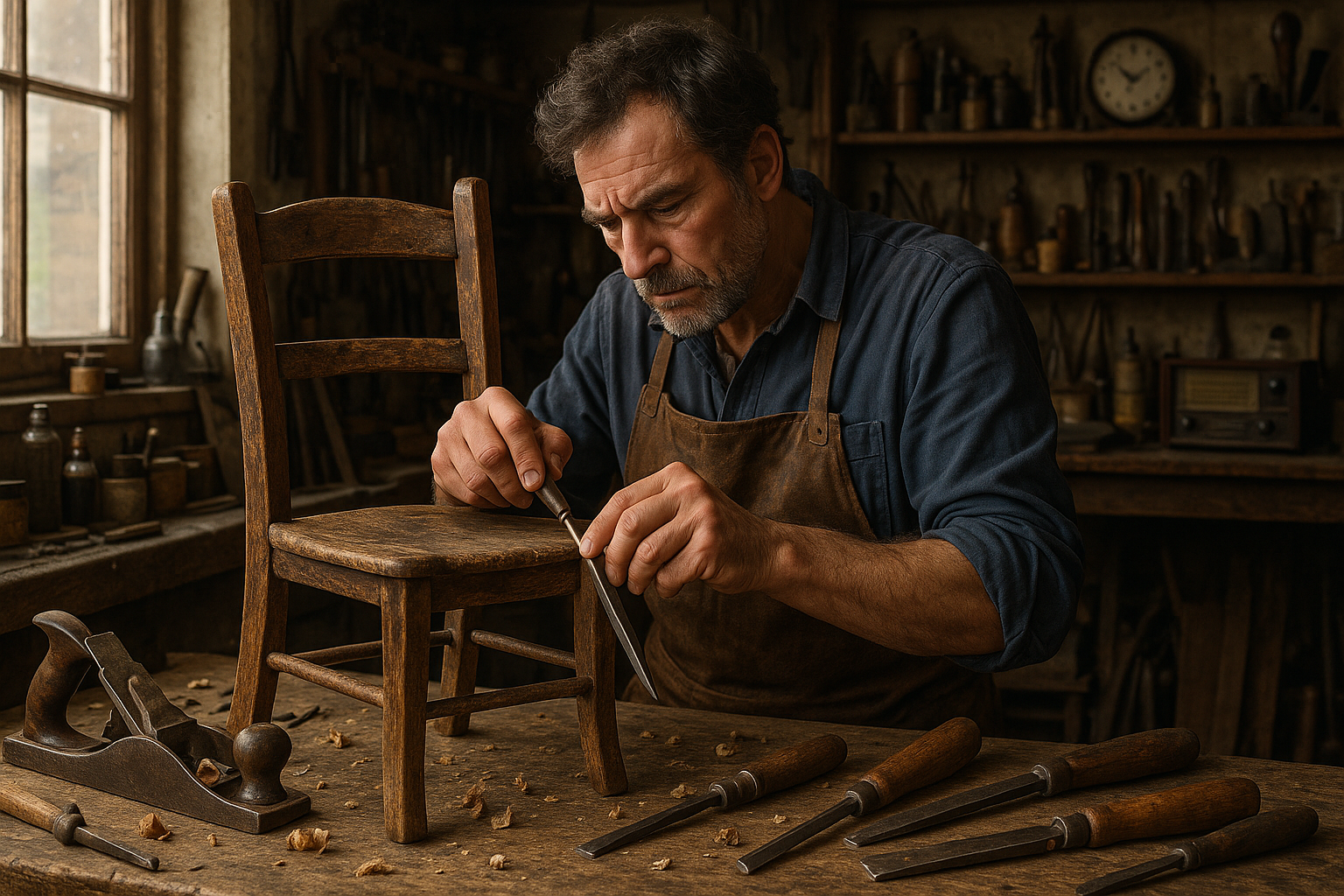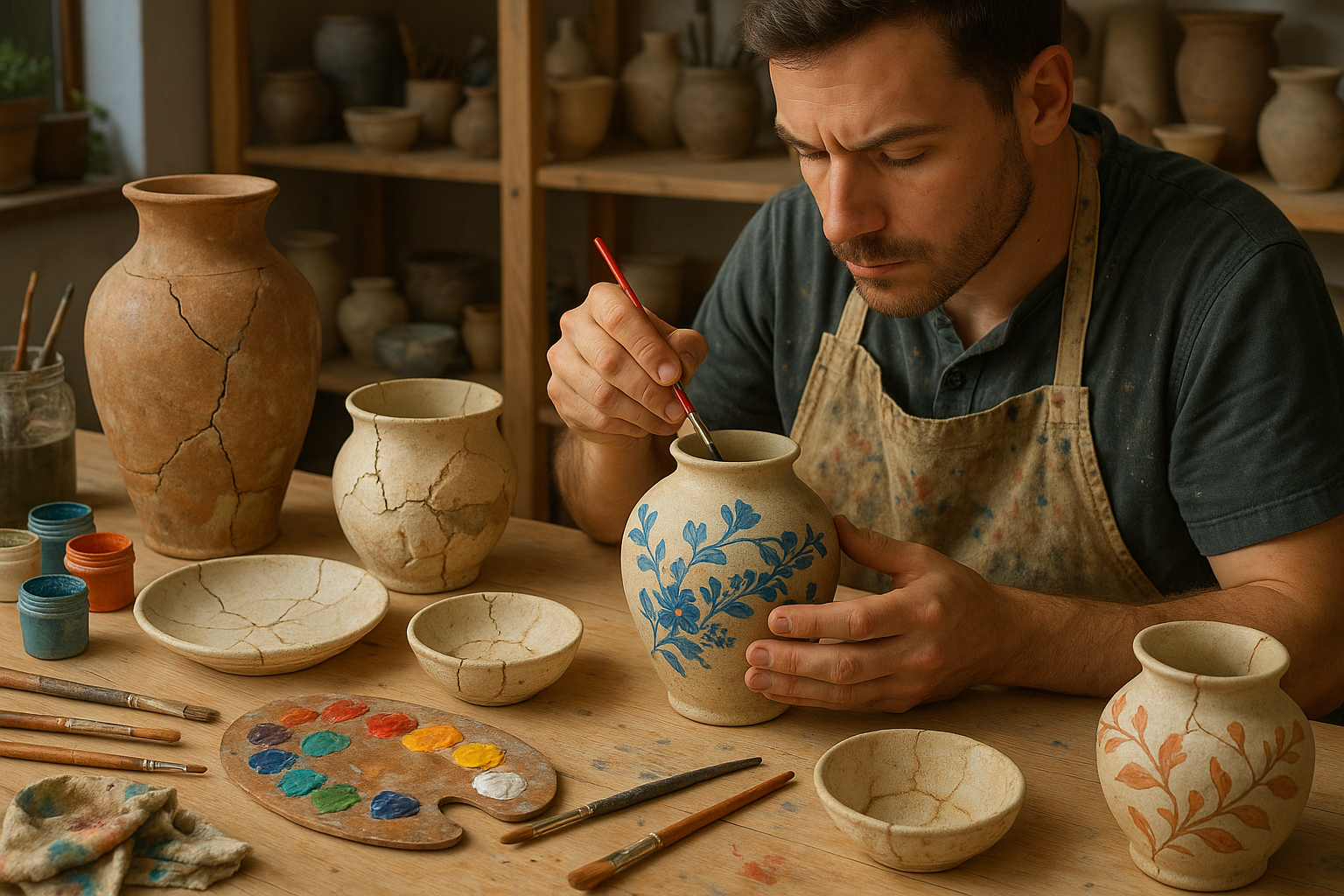In a world increasingly dominated by mass production and disposable goods, there is something profoundly satisfying about reviving an old piece of furniture with your own hands. The art of furniture repair is not merely about restoration; it’s a journey into the heart of craftsmanship where traditional hand tools bring forgotten beauty back to life. 🪑✨ By embracing these time-honored techniques, you not only save cherished pieces from the landfill but also forge a deeper connection with the history and artistry that define them.
Imagine the feel of a finely crafted hand plane gliding over a wooden surface, its sharp blade revealing a lustrous grain hidden beneath layers of neglect. Or the rhythmic sound of a chisel expertly guided to shape and refine intricate details that machines often overlook. These tools, simple yet profound, hold the power to transform furniture repair from a mere task into an art form.
The allure of traditional hand tools lies in their ability to empower the craftsman. They offer a tactile experience, a direct link between the creator and the creation. Unlike modern power tools, which often prioritize speed over precision, hand tools demand patience and skill. But in return, they offer unparalleled control and the satisfaction of a job meticulously done.
Unearthing the History of Hand Tools
Before diving into the practical aspects, it’s essential to appreciate the rich history of these tools. For centuries, artisans have relied on hand tools to create masterpieces of furniture that withstand the test of time. From the Japanese kanna to the European bow saw, each tool carries with it a legacy of innovation and adaptation, crafted to meet the specific demands of the woodworker’s art.
In the pages that follow, we’ll delve into this fascinating history, exploring how different cultures have influenced the development of hand tools and the unique techniques associated with them. This journey through time will not only enhance your appreciation for these tools but also inspire you to incorporate their timeless wisdom into your own projects.
The Essentials: Must-Have Traditional Hand Tools
No exploration of furniture repair with traditional hand tools would be complete without a comprehensive look at the essentials. From chisels and planes to saws and mallets, each tool serves a specific purpose, contributing to the overall success of the restoration process. 🛠️ Understanding their function and mastering their use is key to achieving professional-quality results.
In this section, we’ll provide an in-depth guide to selecting the right tools for your toolkit. We’ll discuss the nuances of each tool, offer tips on maintenance and care, and highlight the subtle techniques that distinguish amateur repairs from true craftsmanship. Whether you’re a seasoned woodworker or a novice eager to learn, this guide will equip you with the knowledge to tackle any repair project with confidence.
The Process: Step-by-Step Furniture Revival
With your toolkit ready, it’s time to embark on the repair process itself. Reviving a piece of furniture is a multi-step journey that requires careful planning and execution. From assessing the damage to selecting the appropriate repair techniques, each step is crucial to ensuring the longevity and beauty of the piece.
We’ll walk you through each stage of the repair process, offering detailed instructions and expert tips along the way. Learn how to identify structural issues, repair and replace damaged components, and finish the piece with a touch of artistry that showcases the wood’s natural beauty. By the end of this section, you’ll have a clear roadmap for transforming any tired, worn-out piece into a stunning showpiece.
The Reward: Embracing the Joy of Craftsmanship
Perhaps the greatest reward of repairing furniture with traditional hand tools is the deep sense of fulfillment that comes from creating something with your own hands. It’s a testament to your patience, skill, and dedication—a tangible reminder of the timeless craftsmanship that modern conveniences can never fully replace.
As we conclude our exploration, we’ll reflect on the emotional and environmental benefits of this practice. From reducing waste to cultivating mindfulness, the art of furniture repair offers more than just aesthetic appeal; it fosters a connection to the past and a commitment to sustainability that resonates in today’s world.
So, grab your tools, roll up your sleeves, and let’s dive into the art of traditional hand tools in furniture repair. Together, we’ll unlock the secrets of craftsmanship that have endured through the ages and breathe new life into the furniture that fills our homes with history and character. 🌿

Conclusion
Throughout this exploration of traditional hand tools in furniture repair, we have journeyed through the rich landscape of craftsmanship that combines both art and utility. This timeless tradition not only preserves the integrity and beauty of our furniture but also nurtures a deeper connection with the history and stories embedded within each piece. By delving into the meticulous techniques and the array of tools such as chisels, planes, and saws, we rediscover the charm and effectiveness that these traditional methods offer in today’s fast-paced world. 🛠️
The importance of these techniques extends beyond mere aesthetics or functionality. They represent a sustainable practice, emphasizing repair over replacement, which aligns with environmental consciousness and sustainability goals. In a world increasingly dominated by disposable culture, learning and applying these skills is not only an act of preservation but also a form of resistance against waste. By choosing to repair and revitalize our furniture, we contribute to a more sustainable future while honoring the craftsmanship of the past.
Engaging with traditional hand tools also offers personal benefits, including the development of patience, attention to detail, and a sense of accomplishment. The tactile nature of working with one’s hands fosters mindfulness and can be a rewarding hobby or even a professional pursuit. For those interested in pursuing this craft, numerous resources and communities are available to support learning and growth. From online tutorials to local workshops, the opportunities to hone these skills are vast and accessible.
Furthermore, as you embrace these practices, you contribute to keeping the tradition of craftsmanship alive for future generations. Each piece you restore becomes a testament to your dedication and passion, adding layers to its history and value. Whether you’re an enthusiast, a professional, or someone simply curious about the art of furniture repair, there’s an enriching journey waiting for you.
As we conclude this exploration, we encourage you to share your experiences and insights. Have you tried your hand at furniture repair using traditional tools? What challenges and triumphs have you encountered along the way? Engage with us and others in the community by sharing your stories in the comments below. 📢
Additionally, if you found this article inspiring, consider sharing it with friends or colleagues who might also appreciate the timeless art of craftsmanship. Together, we can foster a community that values quality, sustainability, and the stories that our furniture tells. 🌍
For those eager to dive deeper into this craft, here are some helpful resources to further your journey:
- Woodcraft: A Guide to Hand Tool Woodworking
- Popular Woodworking: Traditional Tools
- Fine Woodworking: Techniques and Tips
In embracing the art of traditional hand tools, you not only breathe new life into your furniture but also into the skills and practices that have stood the test of time. Let this be an invitation to embark on your own creative journey, with each project being a step towards mastery and personal fulfillment. Happy crafting! 🎨
This conclusion provides a comprehensive summary and calls to action, encouraging engagement and further exploration into the art of traditional hand tools in furniture repair. The links are placeholders; please verify their content and availability before using them.




